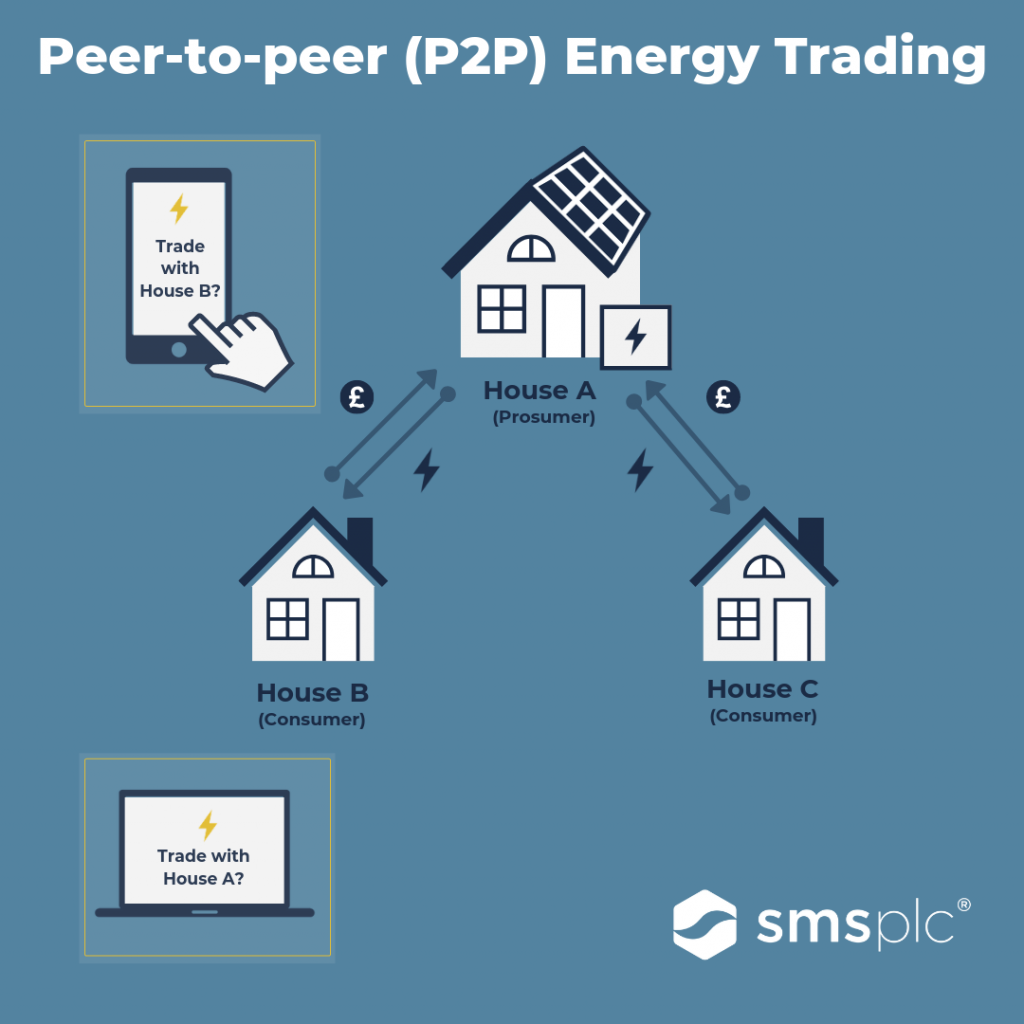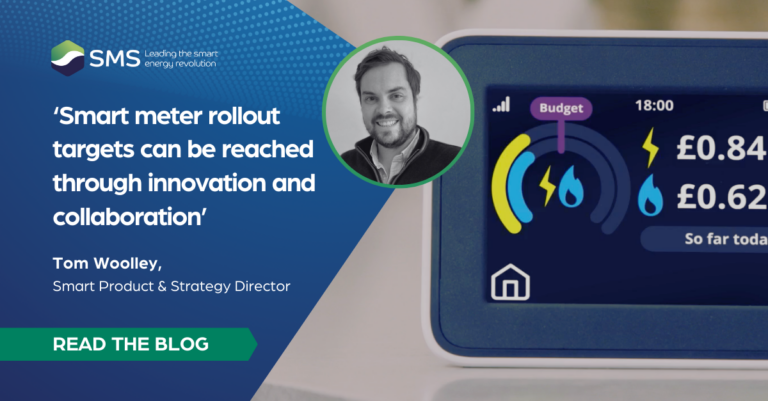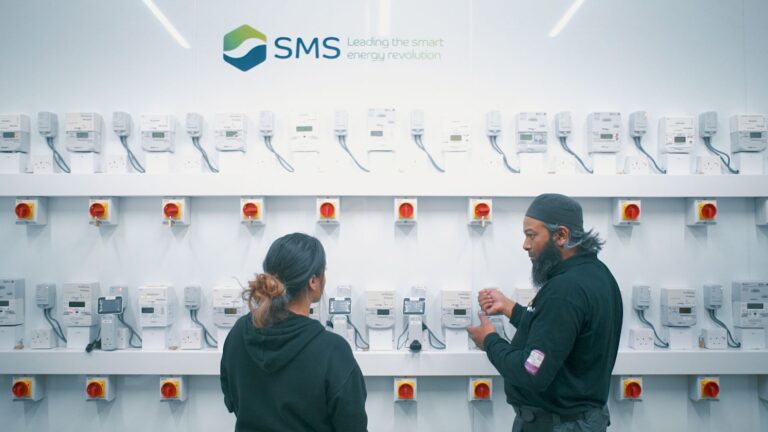UK peer-to-peer energy trading trials get underway

P2P technology, which has transformed traditional industries such as transport, hospitality, and banking, is soon set to be introduced to the energy sector. With trials in the UK having begun, could P2P energy trading provide one of the most disruptive digital trends of our lifetime?
What do popular apps like Uber and Airbnb have in common?
Besides being hugely successful start-ups, they have in recent years pioneered peer-to-peer (P2P) technology that has disrupted and transformed the traditional sectors in which they operate.
P2P applications – which offer individuals a decentralised online platform to interact directly with each other (typically to facilitate a transaction of goods or services without the need for third-party intermediation) – are today common in several industries and, in turn, have helped create a global phenomenon dubbed the “sharing economy”.
While the disruption that these new digital services pose to the status quo has been widely discussed and critiqued, few can argue about the benefits brought to consumers – with many experiencing lower costs and greater efficiency than was previously possible.
One vital sector in which P2P technology has so far yet to touch is energy. But this seems set to change.
P2P energy trading: how will it work?
Until now, our energy system in the UK has been based on households and businesses buying their electricity or gas from one supplier, with limited control over how to reduce costs (besides shopping around for better deals, or by monitoring consumption through a smart meter to instruct greater energy efficiency).
However, through the digitisation of our energy system (a process which is ongoing via the national smart meter rollout), the options available to consumers to save money and cut carbon will be exponentially increased by new and innovative energy technologies, including time-of-use (ToU) tariffs, automatic switching services and – eventually – P2P energy trading.
While ToU tariffs and switching services have already been established in the market, households and businesses will in the future be able to participate in P2P energy trading as well.
In coming years, the blockchain-enabled technology is expected to see consumers increasingly buy and sell their energy to and from local sources (such as neighbours or local businesses who generate their own electricity via solar panels or wind turbines).
This will be done through user-friendly apps or online platforms which allow consumers to see how much energy they use, need, or have stored, and then enable them to trade it instantly with other local users at the click of a button (or through automation).
The main advantage of this is that it will permit users who require extra power to buy it from others who produce more than they need, with those consumers able to sell their excess power for profit.
However, the proposed new energy trading system therefore not only relies on the sophisticated development of its own P2P technology, but also on the more widespread adoption of battery storage and renewable energy generation on a localised scale.
Suppliers support P2P trials
Though trials for P2P energy trading are currently in their infancy, they have the backing of some of the UK’s biggest energy firms – such as Centrica and EDF Energy – who are understandably keen to grasp the impact that the trend will have on the traditional supplier model.
Indeed, although the technology could pose a threat, suppliers are hoping they can provide their own services to households and businesses interested in local energy supply.
For instance, EDF recently began a P2P energy trading trial at a social housing estate in south London. Project Community, which runs between March and October this year, will enable residents of Elsmore House in Brixton to use, store and trade electricity generated by solar panels on the roof of the building.
The aim of the scheme is to increase residents’ consumption of low-carbon power whilst reducing their overall energy bill. Participants are able to manage their energy usage through a platform underpinned by blockchain technology and accessible through an app.
Commenting on the project, Xavier Mamo, director of research and development at EDF Energy, said: “By collaborating with our partners and using blockchain technology, this project aims to show how small communities in dense urban areas could benefit from a low-carbon and local energy system in a new and transformative way.”
Meanwhile, Centrica, the owner of British Gas, is also involved in a scheme at a social housing development in Hackney, north-east London, that will examine what customer bills would look like if they were able to able to trade electricity with their neighbours.
“The way you manage your energy yourself, whether that is as a business customer or consumer, we think, is going to change massively over the next few years,” said Jonathan Tudor, director of technology and innovation strategy at Centrica, on the launch of the trial in 2018.
EVs and microgeneration to drive changing behaviour
Much of the change in how we use and manage our energy is expected to be driven by the increasing uptake of electric vehicles (EV), with an estimated 10 million expected on UK roads by 2030 (up from just 200,00 in January 2019).
With more households and businesses owning EVs, consumers will be able to use their car batteries to store electricity and potentially sell it on through P2P trading when demand is high.
Alongside EVs, local power generation (or microgeneration) is also expected to become more widespread, as an increasing number of consumers seek to cut their costs and take advantage of advances in battery technology to store electricity generated from low carbon sources.
Though P2P trading is still a little while off from hitting the market (exactly when will depend on the success of these early trials and how quickly suppliers can develop new and viable business models), it seems certain that the “sharing economy” will soon arrive in the utilities sector, adding to a smart energy revolution that is already helping the industry become cleaner and more efficient.
Keep track of the smart energy world, including the latest news on P2P energy trading and other stories, by following us on LinkedIn or visiting our Insights page.


